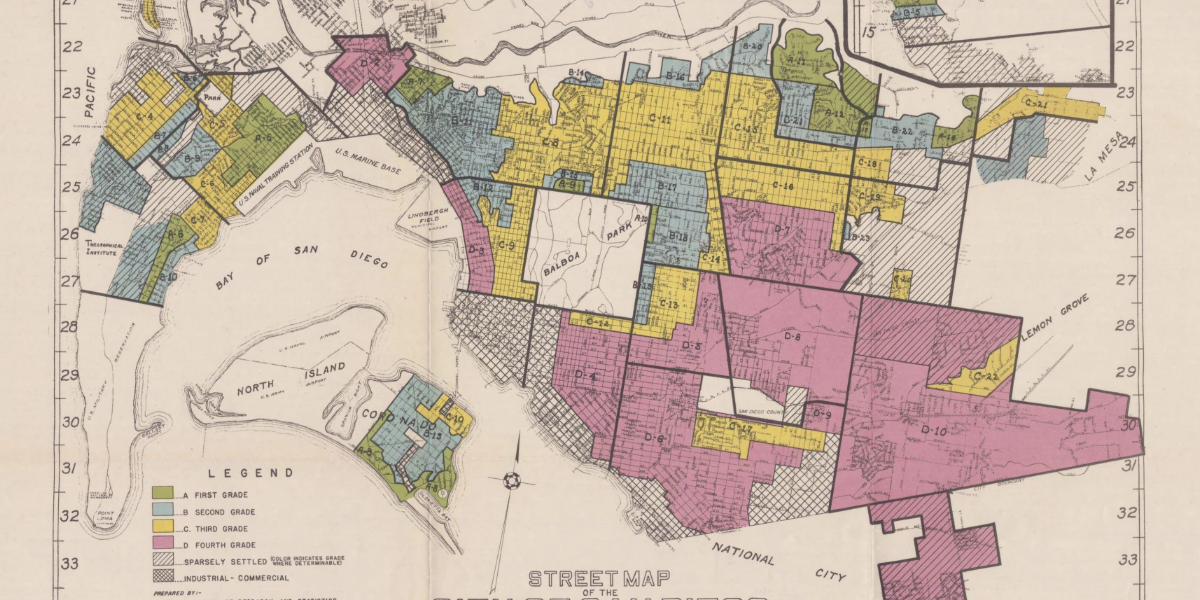By Pamela Gray Payton and Daniel Enemark, Ph.D.
San Diego County has a reputation for affluence, but about 330,000 residents live in poverty — second only to Los Angeles County in the state. Even more startling, more than a third of households don’t earn enough to meet their most basic needs without assistance.
San Diego is the second-largest city in California, and the county is the fifth-largest in the U.S., so the issues in San Diego are a microcosm of the issues plaguing our state and nation. By learning how to address the causes and consequences of inequity, we can apply those lessons across California and the nation.
Last fall, San Diego Foundation and the San Diego Regional Policy & Innovation Center released a report bringing to light the inequity and economic need faced by many San Diegans. The findings are grim: 11 percent of residents live below the federal poverty line — which is $30,000 for a family of four. Can you imagine a family surviving on so little when the average cost of rent is more than $2,500 a month?
We face this reality in part due to a long history of intentionally racist public policy throughout the country, including San Diego. Through practices like redlining, policymakers directed banks to lend only to certain neighborhoods that had no “threat of infiltration” because property ownership was “restricted to the Caucasian race.” The scars of these policies are still visible across the region.
Even as legal discrimination is being excised from the law books, inequality of opportunity remains — and its effects are exacerbated by the high cost of housing, utilities, transportation and food.
San Diego is one of the most expensive metropolitan areas in the U.S. By some measures, it’s the most expensive. Today, the median home price in San Diego is affordable to only 16 percent of White households, and just 6 percent of Black households and 8 percent of Latino/a households.
The high cost of living hits different for families of color. More than half of Black San Diegans spend more than the recommended 30 percent of household income on housing costs. Twice as many Latino/a San Diegans live below the self-sufficiency wage as White San Diegans.
Economic equity is directly tied to health equity, educational equity and more. Latino/a San Diegans are four times as likely to have no health insurance as their White neighbors. And the average White resident is expected to live five years longer than the average Black resident.
Although the numbers are staggering, there’s hope. With data like this, we have a bird’s-eye view of where investments need to flow. In fact, the County of San Diego, in collaboration with the San Diego Regional Policy & Innovation Center, recently released its first annual Equity Indicators Report, which delves into data about inequity in our region.
Understanding the data is a starting point. We must also understand the granular needs of our communities, build political will to address those needs, and target public and philanthropic investments to end the inequality caused by centuries of racism.
All San Diegans – and all Californians – deserve to live in just, equitable and resilient communities. Investing in solutions that address inequity is imperative, and programs that focus on mitigating economic hardship must not be scuttled even in the face of state and regional budgetary challenges.
This isn’t just a moral imperative. It’s an economic necessity. Nothing will contribute more to economic development than lifting families out of generational poverty.
Policymakers must continue to invest in education, workforce development, health, housing and more, so our communities can be well-prepared for the future. For nonprofit and philanthropic organizations, prioritizing investments where the need is greatest is key. At San Diego Foundation, our Black Community Investment Fund focuses on four pillars: education, employment, entrepreneurship and housing.
We must use data like this as a guiding light to implement policies and take action at eradicating economic inequity in our communities. A better future is possible, if we work together to achieve it.
This article originally appeared in The San Diego Union-Tribune. (San Diego Redline Map Credit: T-RACES)
About the Authors
Pamela Gray Payton
Pamela Gray Payton is Vice President, Chief Impact and Partnerships Officer at San Diego Foundation (SDF). Since joining SDF in 2020, Pamela has leaned on her experience as a compassionate leader to guide SDF’s Community Impact team through two consecutive years of record-breaking grantmaking and the innovative implementation of three pillars of the SDF Strategic Plan to advance racial and social justice, foster equity of opportunity and build resilient communities.
Daniel Enemark, Ph.D.
Dr. Daniel Enemark is Chief Economist at the San Diego Regional Policy& Innovation Center (PIC). He leads an interdisciplinary team of research scientists assessing regional challenges and identifying policy and investment priorities. Daniel is a leading voice advocating for a more equitable labor market in San Diego, sharing economic analysis through public presentations and media engagements.




